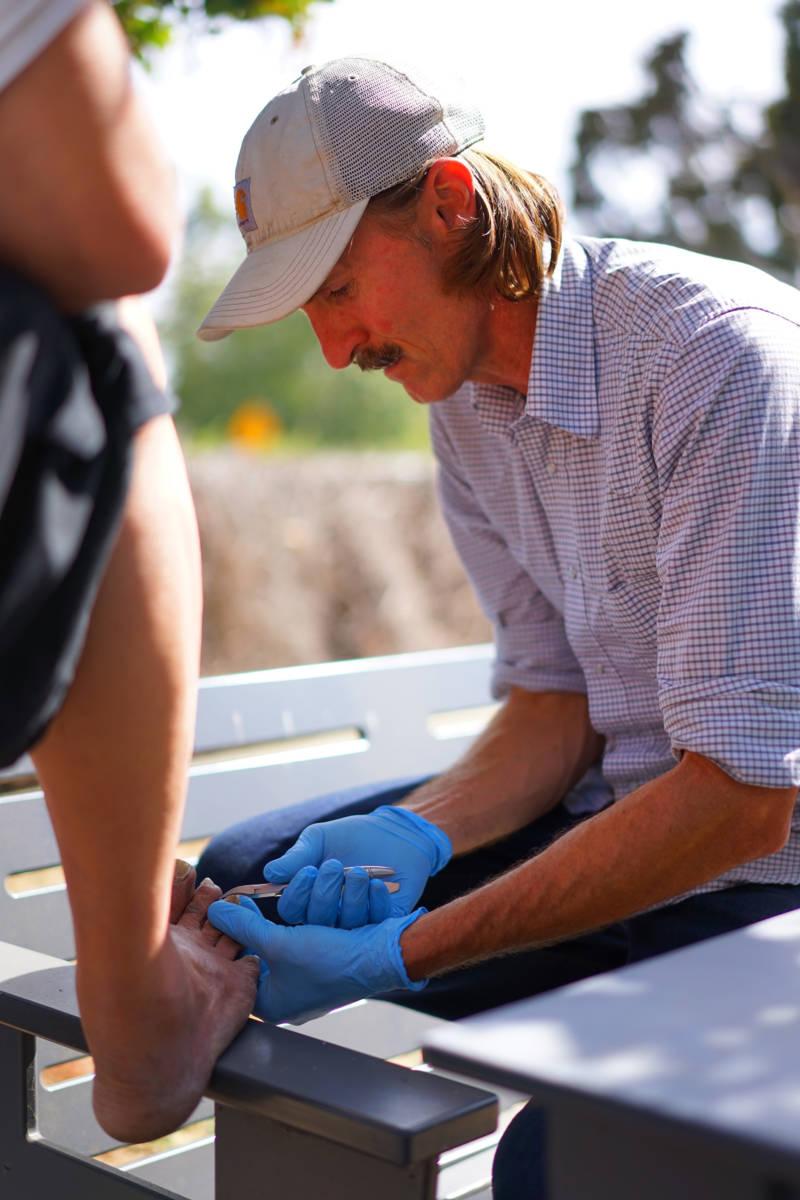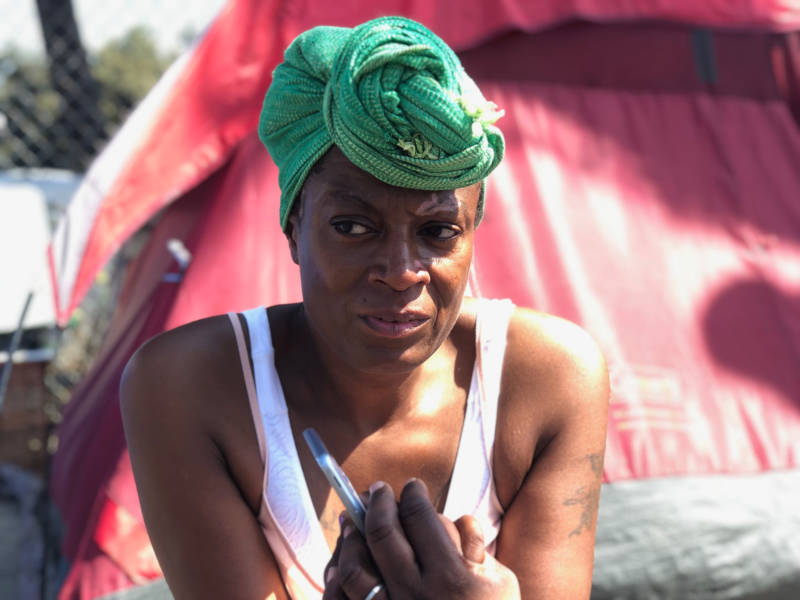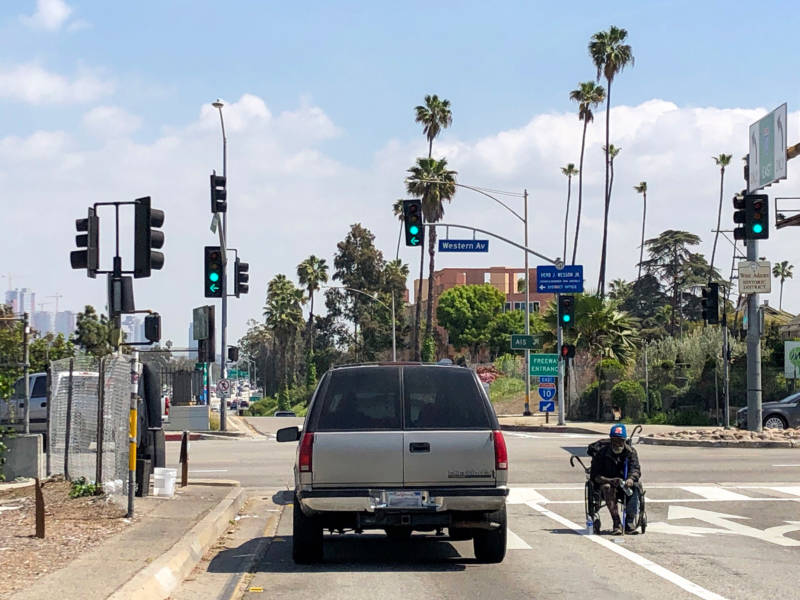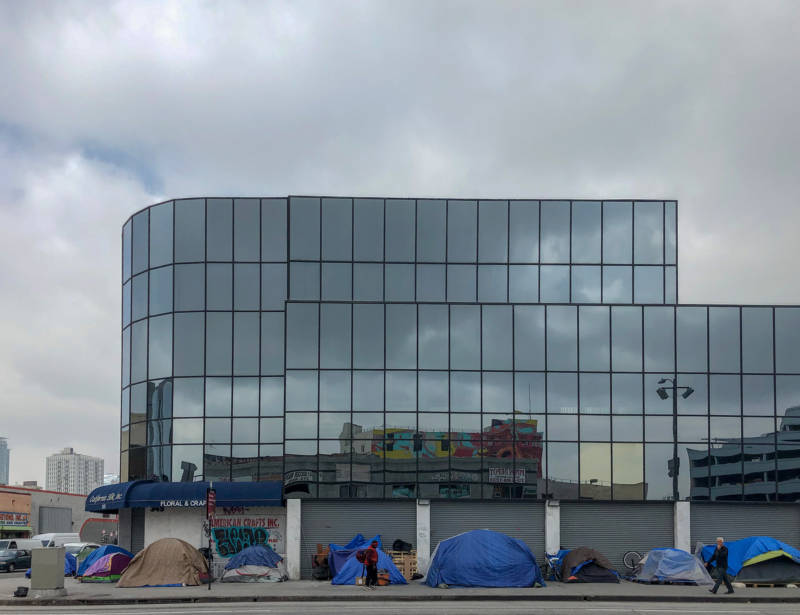Dr. Coley King of the Venice Family Clinic is one of a growing number of medical professionals making house calls to the homeless.
Instead of trying to power-wash the problem away, California’s hospitals, public health departments and homeless service organizations are increasingly sending trained health practitioners into homeless encampments in a quest to improve health outcomes for individual homeless people.
“Western medicine is very much built around the ideal care for the ideal patient. Most of these folks are not in the ideal situation,” King said. “We can make some compromises that still do good medical care and get them to a very good average. It's better to take half of your medicine than none of your medicine.”
One late September day, King makes a house call on Shawnda Thornton, a homeless woman in her late 40s living on the sidewalk across the street from a Silicon Beach tech campus in Venice.

“OK, how are you feeling now on these medications?” he asked her.
“I love these medications because I'm not tired. I don't have to sleep all day. I can walk around and manage myself just like I used to,” she responded.
Thornton has congestive heart failure, and September is the first month this year that she hasn’t been hospitalized.
The goal King has for Thornton is to ensure she has access to ongoing medical care that keeps her out of the hospital. He thinks a lot of the public discussion that revolves around California’s crisis of homelessness misses the individual people who are physically deteriorating because they lack shelter.
“The pitfall of labeling it a public health crisis is it becomes a reactionary ‘not-in-my-backyard’ issue,” King said. “That’s not what this is about. This is about the individuals who are sicker than the rest of us, and who are dying sooner than the rest of us.”
Life on the Streets Is 30 Years Short
The reality of California’s homelessness crisis is that it has a body count. Life expectancy for those who are living outside is about 30 years shorter than those who are housed. The median age of death outside is about 52.
The most comprehensive study available of mortality on the street comes from Boston. It found that two of the three most common causes of death were heart disease and cancer.
Los Angeles County, the epicenter of the state’s homelessness crisis, is expected to see more than 1,000 people die while experiencing homelessness this year. Last year, the number was 921. In Orange County in 2018, it was 210; San Francisco, 135; Sacramento, 132.



